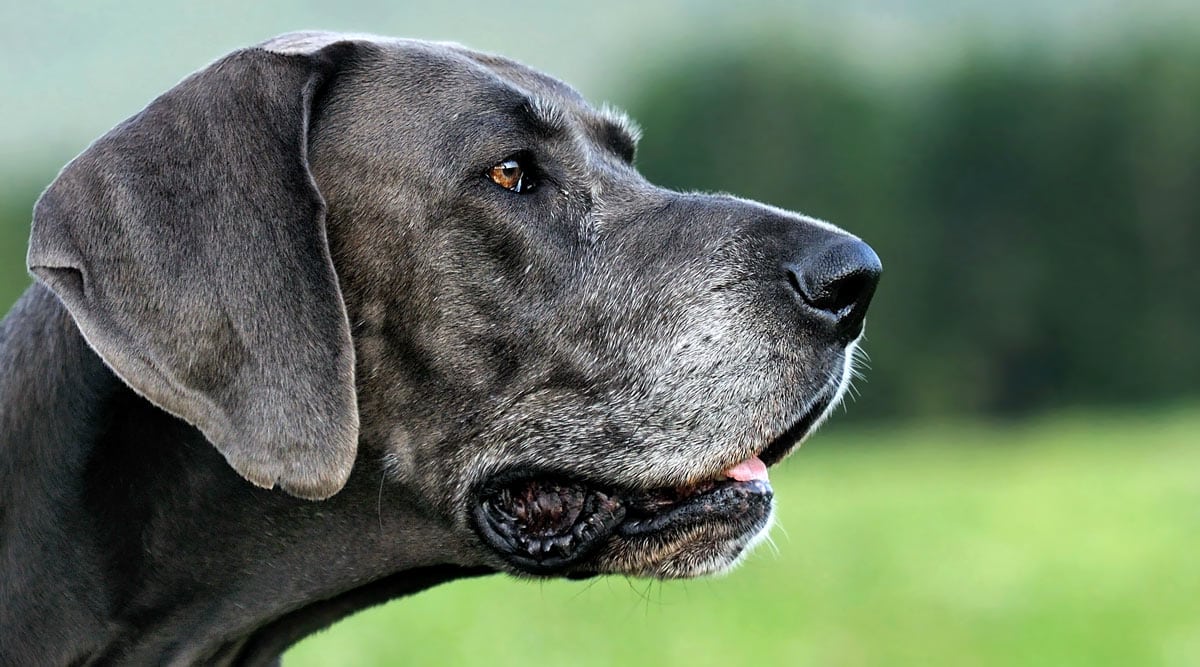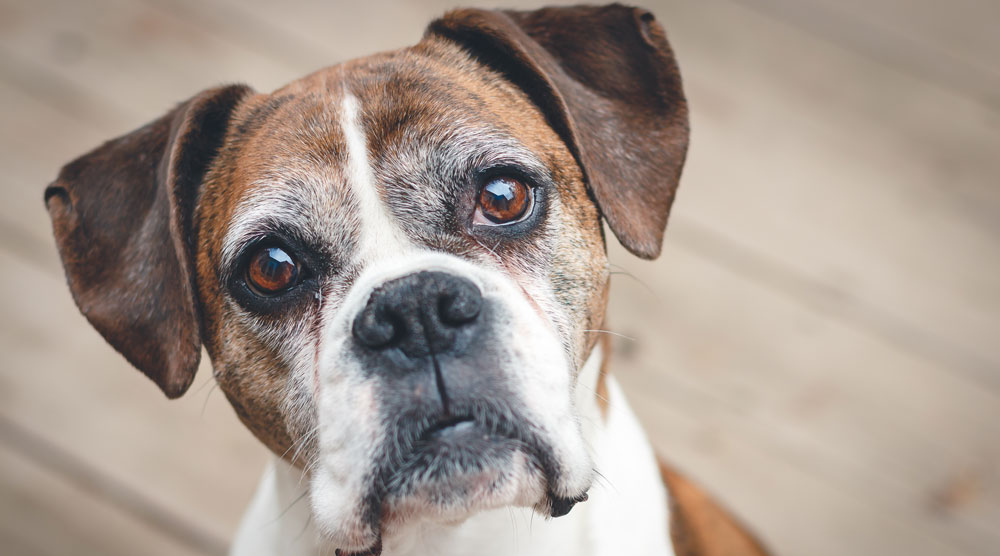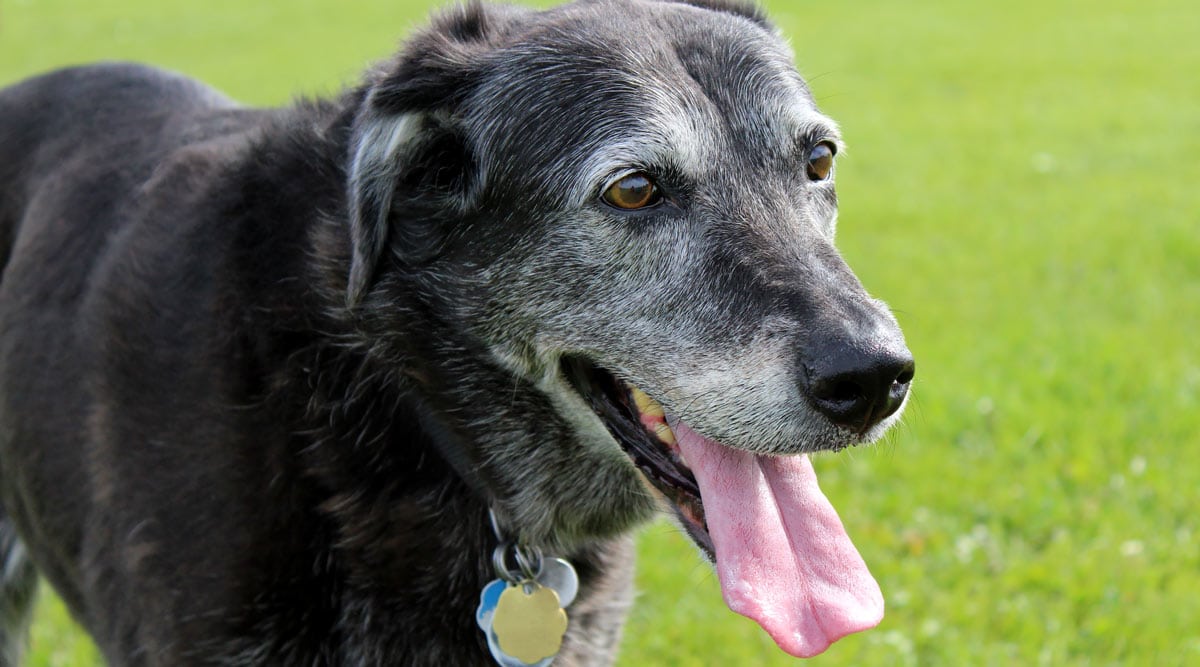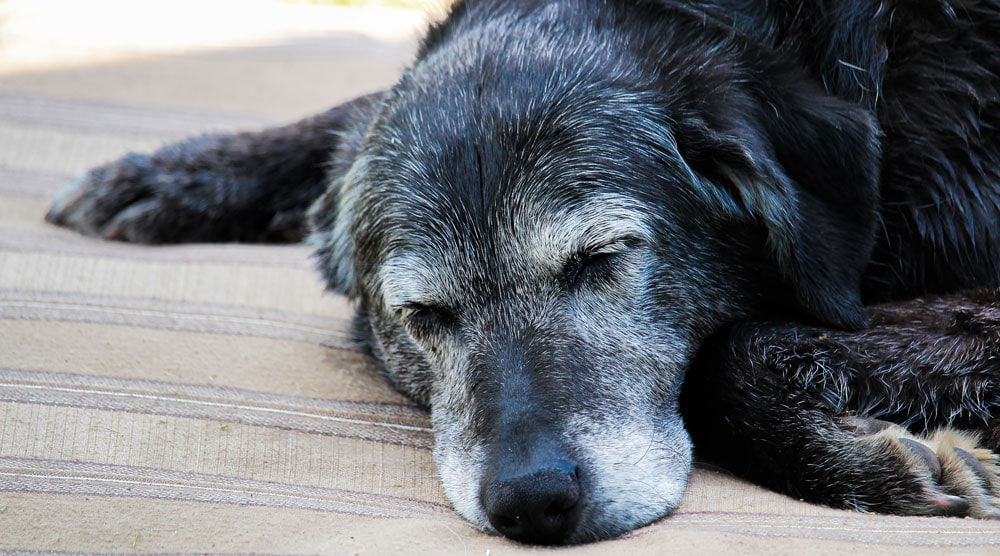Canine cognitive dysfunction (CCD), which is sometimes known as canine dementia, is a common condition affecting senior dogs. We know many of our readers have dogs with CCD, so we asked veterinary surgeon Dr Linda Simon to answer some of your most common questions.
Question 1: What are the early signs of canine cognitive dysfunction (CCD)? How can owners tell the difference between these symptoms and the regular signs of aging?
This is a great question and one which a whole book could be written on! It is all too common for owners to confuse canine dementia with ‘normal aging’ and to assume what their dog is experiencing is simply due to seniority.
Signs of CCD will start off mildly and slowly progress, sometimes making them quite hard to detect. Dementia can also occur alongside other medical issues like arthritis and incontinence. This can make specific signs trickier to pick out.
Some of the more common early signs that I see in my practice include:
- Restlessness, pacing, and agitation
- Trouble sleeping and waking during the night
- Barking for no obvious reason
- Staring into space or becoming ‘disconnected’
- Struggling to recognise certain people or other pets
- Toilet training trouble
- Acting differently, becoming clingy, or a ‘personality change’
Editor Note: Dr Simon has also written a guide to the most common signs of canine dementia if you’d like to learn more about this topic.
Question 2: How is CCD diagnosed? Are there specific tests or assessments to determine its severity?
Frustratingly, there is no test for CCD and it is often a ‘diagnosis of exclusion’. This means if we suspect it and cannot attribute the symptoms to something else (like a UTI or source of pain), a presumptive diagnosis will be made.
Vets will usually base this on their experience, as well as the dog’s age and how long they have been living with their symptoms.
Ruling out other diseases may include performing a neurological and orthopaedic exam, running blood and urine tests, and giving your dog a ‘nose to tail’ check.
Question 3: What are the current treatment options for dogs diagnosed with CCD? How effective are these treatments, and what are their potential side effects?
There is no cure or treatment for CCD right now, but we can manage the symptoms and some interventions could potentially slow down its advance.
I usually recommend a combination of a ‘brain-healthy’ diet and supplements. We can also use a medicine called Vivitonin, to improve circulation within the brain. Some dogs may experience nausea and vomiting when this treatment begins.
Studies have also shown that we can help keep the brain active by engaging our dogs with things like food puzzles, training sessions and interactive toys. The age-old adage “use it or lose it” applies to dogs too!
Question 4: Are there any dietary changes or supplements that can help prevent or alleviate the symptoms of CCD in senior dogs?
As an example of a diet that I sometimes recommend, Hills has developed a food called B/D which has added fish oils and antioxidants. These ingredients help reduce free radical levels and decrease inflammation within the body and brain.
Aktivait is another popular supplement that contains ingredients like selenium to help maintain normal brain function, CoQ10 for extra energy, and L-carnitine to support the mitochondria.
You should always discuss dietary changes or supplements with your vet before giving them to your dog though. Not all foods and supplements are suitable for every dog.
Question 5: What modifications can dog owners make to their home environment to help a dog with CCD feel more comfortable and safe?
One of the key things an owner should do is to keep the dog’s home environment and routine the same. Any abrupt change can cause real confusion and a sudden worsening of the dog’s symptoms. For example, try to avoid moving furniture about, re-decorating, or moving home if at all possible.
Sticking to a routine for things like dinner time and walk time can also provide comfort to a dog with CCD.
Question 6: For dogs with advanced CCD, what recommendations do you have regarding daily routines, sleeping arrangements, and managing potential behavioral changes?
It is not easy on owners when their dog has advanced CCD, but it is important to be patient and provide the dog with the extra care they need.
This may mean more cuddles and one-on-one attention, as well as things like extra toilet breaks, buying padded bedding, and giving them time alone when needed.
Question 7: Are there any recent or upcoming advancements in the research and treatment of CCD that dog owners should be aware of?
One study that really stands out as being pioneering is that by the biotech company ‘Skin2neuron’ who ran a 7 year trial that aimed to rebuild lost brain cells using cell therapy.
Results are promising, with up to 80% of participants improving and some even going into remission.
Thank you Dr Linda Simon for answering these questions for The Dog Clinic. Do you have any other questions you would like answered related to canine dementia? Or is there another topic you would like us to ask Linda about? Let us know in the comments section.




